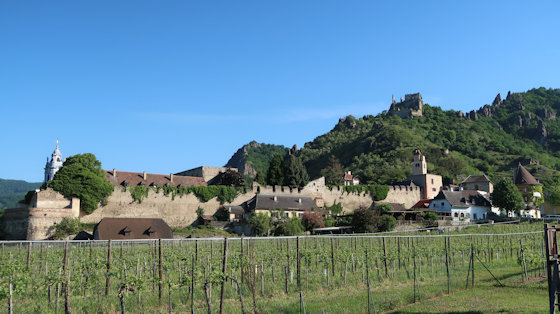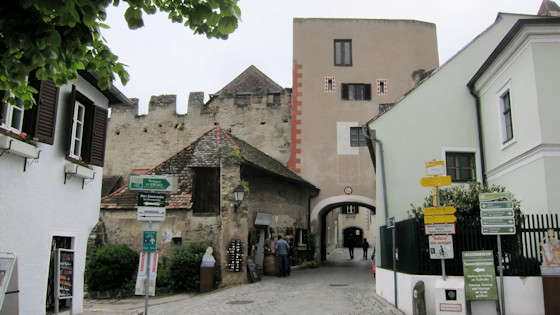During the 11th century the Kuenringers came to Austria from the Bavarian-Saxon area. Asso von Kuenring acquired the area around today's Dürnstein, his grandson Hadmar I. built a first castle on the rock above the Danube, of which only ruins remain today. In 1192/93 the English King Richard I. Lionheart was imprisoned in the castle of the Kuenringers by order of the Babenberger Leopold V. A share of Richard's ransom money, which went to the Kuenringers, enabled the castle and town of Dürnstein to be expanded and flourished in the 13th and 14th centuries.
The Dürnstein monastery was settled by Augustinian canons in 1410. In the course of the 15th century they extended Dürnstein to a Gothic monastery complex. 300 years after the foundation of the monastery, Hieronymus Übelbacher was elected provost. The building was in poor condition, so he decided to baroque it.
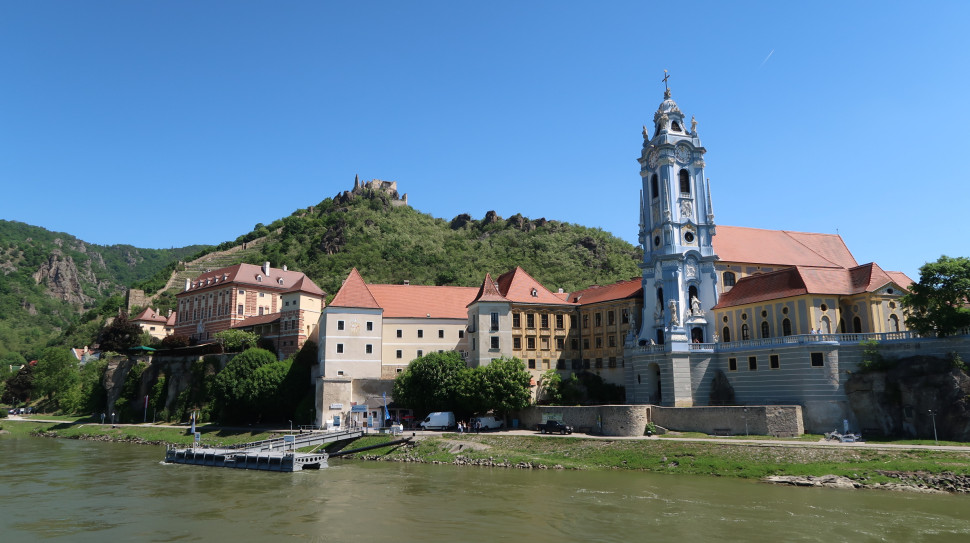
Most striking is the blue and white tower of the collegiate church, which has been restored to its original colouring. With its striking colours and the noble material that makes it look ceramic, it stands as an architectural signal in the landscape.
Through the narrow main 'street' of Dürnstein you are only allowed to push the bike.
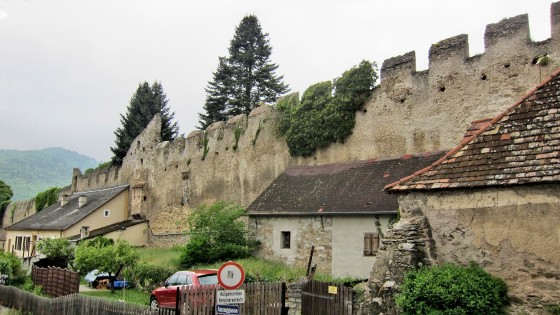
The town wall of Dürnstein is preserved. The alley in front of it is funny called "Anzuggasse" (pull on alley). It leads from the bank of the Danube up to the town and here the horses had to pull on.

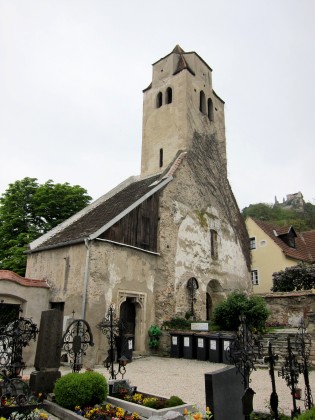
The Kunigundenkirche is the oldest church in Dürnstein, was formerly a parish church and consecrated to St. Kunigunde - wife of Emperor Heinrich II. The church was built around 1200 and demolished in 1783. Only the tower and the sacristy remained.

View of the Danube from the balcony of the monastery Dürnstein


Danube cycle route
